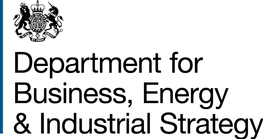GFDL-R15 GCM Model Information
Background Information
The experiments with the GFDL model used here were performed using the coupled ocean-atmosphere model described in Manabe et al. (1991) and Stouffer et al., (1994) and references therein. The model has interactive clouds and seasonally varying solar insolation. The atmospheric component has nine finite difference (sigma) levels in the vertical. This version of the model was run at a rhomboidal resolution of 15 waves (R15) yielding an equivalent resolution of about 4.5º latitude by 7.5º longitude. The model has global geography consistent with its computational resolution and seasonal (but not diurnal) variation of insolation.
The ocean model is based on that of Byan and Lewis (1979) with a spacing between gridpoints of 4.5º latitude and 3.7º longitude . It has 12 unevenly spaced levels in the vertical dimension. To reduce model drift, the fluxes of heat and water are adjusted by amounts which vary seasonally and geographically, but do not change from one year to another. The model also includes a dynamic sea-ice model (Bryan, 1969) which allows the system additional degrees of freedom.
The 1000-year unforced simulation used here is described in
Manabe and Stouffer (1996). The drift in global-mean temperature
during this unforced simulation is very small at about
-0.023ºC per century.
The two GFDL-R15 climate change experiments used here use the IS92a scenario of estimated past and future greenhouse gas (GGa1) and combined greenhouse gas and sulphate aerosol (GSa1) forcing for the period 1765-2065 (Haywood et al., 1997). For the GGa1 experiment only the 100-year segment from 1958-2057 are available through the IPCC DDC. The radiative effects of all greenhouse gases is represented in terms of an equivalent CO2 concentration, and the direct radiative sulphate aerosol forcing is parameterised in terms of specified spatially dependent surface albedo changes (following Mitchell et al., 1995). Results from these climate change experiments are discussed in Haywood et al. (1997).
Global-Mean Temperature, Precipitation and CO2 Changes (w.r.t. 1961 - 1990) for the CGCM1 integrations
| 2020s | 2050s | 2080s | ||||||||||
| DT (°C) |
DP (%) |
DSL (cm) |
CO2 (ppmv) * |
DT (°C) |
DP (%) |
DSL (cm) |
CO2 (ppmv) * |
DT (°C) |
DP (%) |
DSL (cm) |
CO2 (ppmv) * |
|
| GGa | 1.71 |
3.4 |
NA |
447 |
2.67 |
5.7 |
NA |
554 |
NA |
NA |
NA |
NA |
| GSa | 1.35 |
2.7 |
NA |
447 |
2.21 |
4.2 |
NA |
554 |
NA |
NA |
NA |
NA |
Notes
The model's climate sensitivity is about 3.7ºC.
* The CO2 concentration has been estimated assuming an IS92a mix of greenhouse gases and concentration / forcing relationships reported in the IPCC Second Assessment Report.
References and other reading
Haywood,J.M., Stouffer,R.J., Wetherald, Manabe,S. and Ramaswamy
1997 Transient response of a coupled model to estimated
changes in greenhouse gas and sulphate concentrations Geophys.
Res. Letts., 24, 1335-1338.
Knutson,T.R. and Manabe,S. 1995 Time-mean response over
the tropical Pacific to increased CO2 in a coupled ocean-atmosphere
model J.Climate, 8, 2181-2199.
Knutson,T.R., Manabe,S. and Gu,D. 1997 Simulated ENSO in
a global coupled ocean-atmosphere model: multidecadal amplitude
modulation and CO2 sensitivity J.Climate, 10, 138-161.
Manabe,S. and Stouffer,R.J. 1996 Low frequency variability
of surface air temperature in a 1000 year integration of a coupled
atmosphere-ocean-land surface model J. Climate,
9, 376-393
Manabe,S., Stouffer,R.J., Spelman,M.J. and Bryan,K. 1991
Transient response of a coupled ocean-atmosphere model to gradual
changes of atmospheric CO2. Part I: annual-mean response J.
Climate, 4, 785-818
Simmonds,I. And Walland,D.J. 1998 Decadal and centennial
variability of the southern semi-annual oscillation simulated
in the GFDL coupled GCM Climate Dynamics, 14, 45-54.
Stouffer,R.J., Manabe,S. and Vinnikov,K.Ya. 1994 Model
assessment of the role of natural variability in recent global
warming Nature, 367, 634-636.
Further Details
A comparison of climate change simulations produced by two GFDL coupled climate models
 "
"
